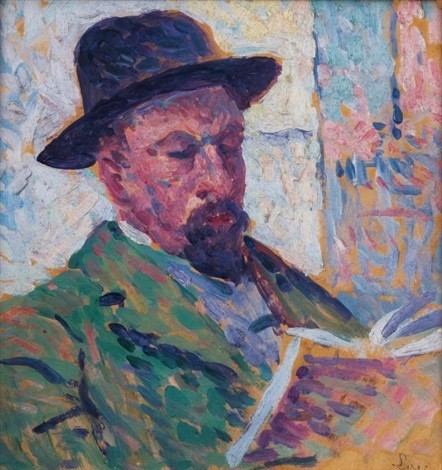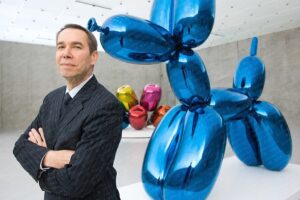Maximilien Luce- Introduction: At a glance
Maximilien Luce, an accomplished French artist, played a significant role in the Impressionist and Neo-Impressionist movements. So transitioning from his early days as a printmaker, Luce’s mastery of color and light captivated audiences, leaving a lasting impact on the art world.
Maximilien Luce- 3 Frequently asked questions
1. If I want to know everything about this Pointillism artist, then which category should I select to this?
If you want to know everything (Biography of Maximilien Luce) means basic things about Maximilien Luce, then you should know the following items:
Type Maximilien Luce Wikipedia and read these sections: Notre Dame de Paris 19contentoscontentos, Madame Luce on the Balcony, 1893 & The port of Saint-Tropez, 1893
You may also search: (Maximilien Luce artandcrafter.com). Also our website would give you information– Biography of Maximilien Luce, short notes of Maximilien Luce, etc.
2. What are some interesting facts about Maximilien Luce?
Some interesting facts about Maximilien Luce, as mentioned on various sources including Wikipedia:
- Early Life: Maximilien Luce was born on March 13, 1858, in Paris, France. He initially trained as a wood-engraver, which greatly influenced his later artistic style.
- Impressionist Associations: Luce was associated with prominent Impressionist artists like Camille Pissarro and Paul Signac. Who had a significant impact on his artistic development.
- Neo-Impressionism: Inspired by Georges Seurat, Luce adopted. The Neo-Impressionist technique of Pointillism, using small, distinct dots of color to create vibrant and luminous images.
- Social and Political Themes: Luce’s art often delved into social and political subjects, depicting scenes of industrialization, urban life, and working-class struggles.
- Anarchist Sympathies: Luce held strong anarchist beliefs, and this ideology often found its way into his art, reflecting his social and political convictions.
- Participation in Exhibitions: He exhibited regularly at the Salon des Indépendants and was part of the Société des Artistes Indépendants, showcasing his work alongside other notable artists of his time.
- Artistic Evolution: While Luce initially painted in an Impressionist style, he later transitioned to a more individualistic approach, combining Pointillism with a more expressive and personal touch.
- Use of Light and Color: Luce was praised for his masterful use of light and color, which brought a sense of vibrancy and movement to his paintings.
- Artistic Legacy: Maximilien Luce’s contributions to Neo-Impressionism and his dedication to depicting social realities left a lasting impact on the art world, earning him recognition as a significant figure in art history.
These interesting facets of Maximilien Luce’s life and art offer a glimpse into the multifaceted nature of his artistic journey.
3. What do you love and hate the most about Maximilien Luce?
This categorization has been done according to Wikipedia data:- (Pointillism + Maximilien Luce)
So If you find something wrong about Maximilien Luce, you may contact us through our comment section.
Maximilien Luce is the artist of Pointillism movement, and this comparison has been made with these artists- Georges Seurat, Gerhard Richter, Jackson Pollock, Andy Goldsworthy, and Bridget Riley.
And also you can compare artworks such as “The Quai Saint-Michel and Notre-Dame,” “A Street in Paris in May 1871,” “Morning, Interior,” “Maximilien luce la seine à herblay” and “les batteurs de pieux” with other Pointillism artists.
Everything is given on this website: Search, read, and compare!
Other artists
Maximilien Luce, a prominent Post-Impressionist artist, had a profound influence on his contemporaries and the art world at large. Transitioning from his association with the Neo-Impressionist movement, Luce’s unique style inspired several other artists of his time.
One notable figure influenced by Luce was Paul Signac, with whom he shared a deep artistic camaraderie. Both artists embraced Pointillism and Divisionism, exploring the play of light and color through meticulous brushwork. Their collaborative efforts contributed to the development and popularization of these revolutionary techniques.
Similarly, Henri-Edmond Cross, another artist associated with the Neo-Impressionist circle, drew inspiration from Luce’s commitment to capturing the essence of landscapes and cityscapes. Cross, like Luce, employed vibrant color and geometric precision to evoke emotion and atmosphere in his paintings.
Moreover, Luce’s impact extended to younger generations of artists who admired his dedication to social and political themes. His involvement in the anarchist movement resonated with artists like Théo van Rysselberghe, who shared a passion for using art as a means of social commentary.
In conclusion, Maximilien Luce’s influence on other artists was multi-faceted, touching on various artistic techniques and ideological perspectives, leaving an indelible mark on the Post-Impressionist movement and shaping the course of modern art.
Maximilien Luce- Personal life
The personal life of Maximilien Luce, a prominent Post-Impressionist artist, is an intriguing narrative marked by various transitions and influential experiences. Born into a working-class family in France, Luce’s early struggles shaped his social consciousness and artistic perspectives. So transitioning into adulthood, he joined the anarchist movement, which had a profound impact on his political beliefs and artistic subject matter.
Throughout his life, Luce’s artistic journey was interwoven with significant encounters and friendships. So his association with celebrated artists like Camille Pissarro and Paul Signac exposed him to new artistic techniques and philosophies, enriching his own artistic style.
Family played a pivotal role in Luce’s life, providing emotional support and inspiration for his works. His commitment to portraying scenes of labor and everyday life depicted not only his artistic integrity but also his deep connection to the working-class community.
Despite facing personal hardships, Luce’s passion for art and his advocacy for social justice remained unwavering. So his dedication to capturing the essence of human experiences through his art makes Maximilien Luce’s personal life an intriguing and influential aspect of his legacy.
Maximilien Luce- Anarchism
Maximilien Luce’s anarchism, a defining aspect of his life and art, played a crucial role in shaping his unique perspective as an artist. Transitioning from traditional academic training, Luce’s embrace of anarchism propelled him to become a prominent figure in the French anarchist movement. This ideological shift greatly influenced his artistic expression, aligning his paintings with the social and political issues of his time.
Luce’s artwork served as a visual commentary on the plight of the working class, often depicting scenes of laborers, strikes, and protests. Through his use of vibrant colors and dynamic brushwork, he conveyed the energy and passion of the anarchist cause. Transitioning from the academic norms, Luce’s work became a powerful tool to challenge established authority and advocate for social change.
Furthermore, his affiliation with anarchist circles provided him with a network of like-minded intellectuals, including prominent writers and philosophers. This cross-pollination of ideas inspired Luce to delve deeper into the core values of anarchism and further fuel his artistic pursuits.
In conclusion, Maximilien Luce’s commitment to anarchism infused his art with purpose and meaning, making him a notable contributor to the anarchist movement and a distinguished artist whose works continue to resonate with social and political relevance.
You would know the following things
In this article: You would know the following things- Categories:
Biography | Notes | Artworks:- This article, you would read the biography of Maximilien Luce, Maximilien Luce short notes along with top artworks. This page would provide you with Maximilien Luce history that is very easy to read.
Life, paintings | contribution:-
This article covers the whole life of Maximilien Luce in one go, the main contribution of this Pointillism artist, famous paintings such as “The Quai Saint-Michel and Notre-Dame,” “A Street in Paris in May 1871,” and “Morning, Interior”.
Short notes | Know everything:-
If you are a/an Pointillism student and there is a requirement to study everything such as Pointillism history, artists of Pointillism, their main contribution along with their comparison. Then this article on Maximilien Luce is perfect for you.
Facts | Overview | whole life:-
This article summarizes the life of this Pointillism artist through YouTube video. Artworks of Maximilien Luce have been demonstrated in this article. Information is in video form.
Maximilien Luce- Family
The family of Maximilien Luce played a crucial role in shaping the artist’s life and career, because evidenced through various aspects. So transitioning from his formative years, Luce’s upbringing in a working-class family instilled in him a deep sense of empathy and connection with the common people. This empathy later became a defining characteristic of his art, as he depicted scenes of laborers and everyday life with profound authenticity.
Furthermore, Luce’s family provided unwavering support for his artistic pursuits, encouraging him to pursue his passion despite societal and financial challenges. Also their support allowed him to study art formally and develop his skills as a painter.
Throughout his life, Luce’s family remained a source of inspiration and stability, guiding him through various personal and professional challenges. Their presence nurtured his artistic vision, enabling him to create masterful works that captured the essence of his time.
In conclusion, the family of Maximilien Luce played a central role in his artistic journey, influencing his artistic themes and providing the support necessary for him to become a prominent figure in the world of art.

Maximilien Luce- Relation with Pointillism
The artworks of this Pointillism artist explore the relationship between celebrity culture and artistic expression.
Maximilien Luce is a leading figure among the artist of Pointillism, and there are so many artworks such as “The Quai Saint-Michel and Notre-Dame,” “A Street in Paris in May 1871,” “Morning, Interior” wherein Maximilien Luce had also played important role passively.
Maximilien Luce questioned the distinction between everyday objects (Related to other Pointillism paintings) and art objects (Related to Pointillism movement).
The artworks of this artist show attributes of Baroque, Art deco, Folk art.
Because Baroque has given intellectual support to this artist and Art deco provides subject matter, and Folk art gives the way of artistic expression to the Maximilien Luce.
Maximilien Luce is counted among the pioneers of this Pointillism art movement.
Because this artist has given many artworks such as “The Quai Saint-Michel and Notre-Dame,” “A Street in Paris in May 1871,” “Morning, Interior,” “Maximilien luce la seine à herblay” and “les batteurs de pieux” etc.
Artworks of Maximilien Luce represent the deep connection between Pointillism and other art movements.
The later work of this Pointillism artist represents societal and artistic subjects.
Some people say that Maximilien Luce had dedicated Pointillism career to advertising and commercial art.
And when this artist got success in Pointillism art movement then came back to the artistic world. “The Quai Saint-Michel and Notre-Dame” is another notable work (contributory) of this artist.
This article name is– Maximilien Luce – Life, paintings, contribution, death- Easy explanation.
1. Folk art
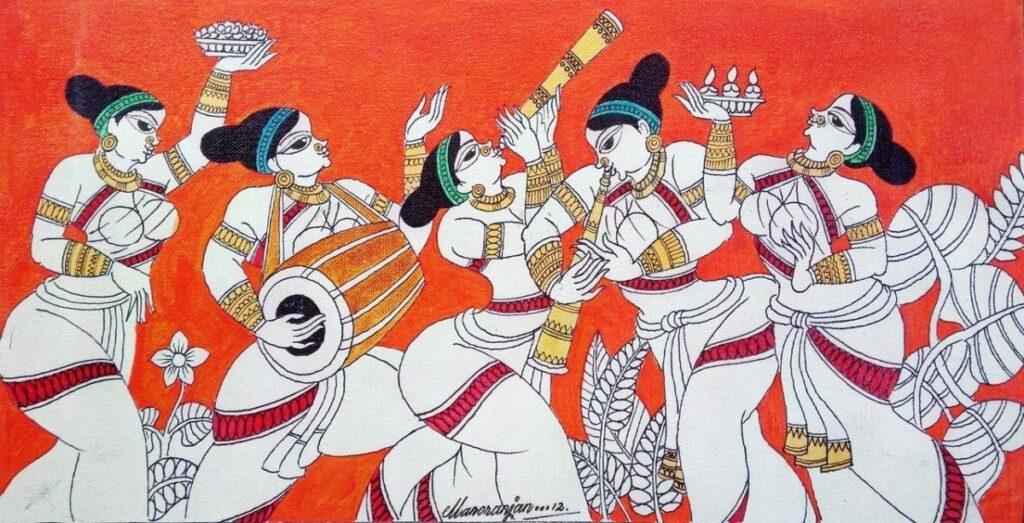
Folk art, deeply rooted in cultural traditions, preserves heritage and craftsmanship, celebrating diverse identities and enriching artistic narratives worldwide.
2. Baroque

Baroque, a grand artistic movement, transitioned from Renaissance, characterized by ornate details, drama, and emotional intensity in its works.
3. Art deco

Art Deco, a glamorous and influential design style of the 1920s, seamlessly merged modernism with luxurious aesthetics, captivating global audiences.
Maximilien Luce- Work
Maximilien Luce’s body of work represents a remarkable journey of artistic exploration and socio-political engagement. So transitioning from his early days as an apprentice to Impressionist painters, Luce’s art evolved into a distinct Neo-Impressionist style. Also adopting Pointillism and Divisionism techniques, he delved into the interplay of light and color, producing luminous and vibrant compositions.
Luce’s oeuvre often focused on scenes of laborers, industrial landscapes, and the working class, reflecting his deep social consciousness. So transitioning from the idyllic charm of Impressionism. So he delved into the gritty realities of urban life, capturing the essence of the changing industrial society.
Furthermore, his involvement in anarchist circles and commitment to social justice found expression in his art. Which became a visual commentary on the socio-political issues of his time. Through transitions between natural and artificial light, Luce’s paintings conveyed a sense of dynamism and movement, engaging viewers on both aesthetic and intellectual levels.
In conclusion, Maximilien Luce’s work stands as a testament to the power of artistic evolution, transcending traditional boundaries to embrace innovative techniques while remaining deeply connected to the pressing issues of his era.
Maximilien Luce- Paintings/Artworks
1. The Quai Saint-Michel and Notre-Dame

The Quai Saint-Michel and Notre-Dame, connected by the Seine, form a picturesque and iconic scene in Paris, France.
2. A Street in Paris in May 1871
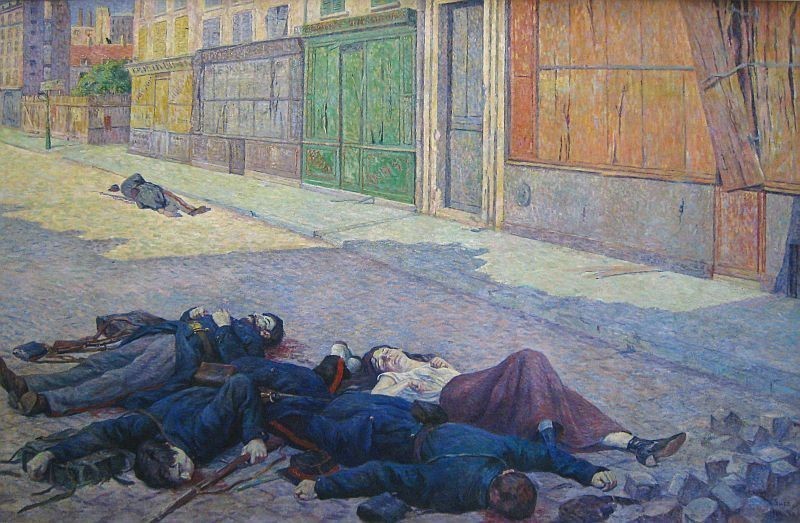
“A Street in Paris in May 1871” portrays the vivid essence of the city, capturing its bustling life and historic significance.
3. Morning, Interior
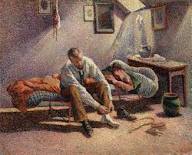
Morning, Interior: A compelling artistic representation of the tranquil ambiance and natural light that gently bathes indoor spaces.
4. Maximilien luce la seine à herblay
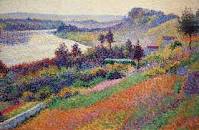
Maximilien Luce’s “La Seine à Herblay” portrays the tranquil river with exquisite brushwork, capturing its beauty and serenity.
5. les batteurs de pieux

“Les batteurs de pieux” (The Pile Drivers). An iconic painting by Gustave Caillebotte, showcases laborers at work, blending realism and impressionism.
Maximilien Luce- Other artists of this Art Movement
Both options are available: Our website artandcrafter.com and Wikipedia.org

